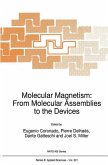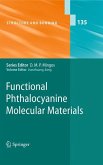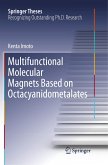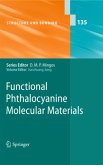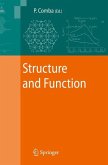The book deals with recent scientific highlights on molecular magnetism in Europe. Molecular magnetism is a new interdisciplinary discipline gathering together chemists and physicists, theoreticians and experimentalists. The book intends to provide the reader with documented answers to some current questions. How chemists can use soft conditions to transform molecules in light and transparent magnets? How a molecular system can behave as a single molecule magnet? How to combine several functions in the same molecular system? How light can be used to switch molecular magnetic properties? How can molecules be used for ultimate high density information storage or in quantum computing? What kind of methods do physicists develop and use to explore these new properties of matter? What kind of concepts and calculations can be provided for theoreticians to design new objects and to better understand the field and to enlarge its exciting developments?
high as 35 K. The rush to room temperature was won by Miller and Epstein again who showed that V(TCNEh is a disordered ferrimagnet above room temperature. Verdaguer opened the saga of Prussian blue derivatives, finally reporting a ferri magnet comprising chromium(III), vanadium(II), and vanadium(III) which orders above room temperature. Nowadays the attempts to prepare molecular magnets which can be used at room temperature are continuing but at the same time there are many attempts to synthe sise molecular magnets which have properties which are difficult to be met in inor ganic magnets. Day reported an organic superconductor coexisting in the same lattice of a molecular paramagnet, while more recently Coronado reported a mole cular ferromagnet hosting in the lattice an organic conductor. This is an example of ferromagnetic conductor in which the active electrons, namely conducting and mag netic, are separated. Many efforts are currently done to investigate chiral magnets and touse light to influence the magnetic properties of the materials.
high as 35 K. The rush to room temperature was won by Miller and Epstein again who showed that V(TCNEh is a disordered ferrimagnet above room temperature. Verdaguer opened the saga of Prussian blue derivatives, finally reporting a ferri magnet comprising chromium(III), vanadium(II), and vanadium(III) which orders above room temperature. Nowadays the attempts to prepare molecular magnets which can be used at room temperature are continuing but at the same time there are many attempts to synthe sise molecular magnets which have properties which are difficult to be met in inor ganic magnets. Day reported an organic superconductor coexisting in the same lattice of a molecular paramagnet, while more recently Coronado reported a mole cular ferromagnet hosting in the lattice an organic conductor. This is an example of ferromagnetic conductor in which the active electrons, namely conducting and mag netic, are separated. Many efforts are currently done to investigate chiral magnets and touse light to influence the magnetic properties of the materials.


